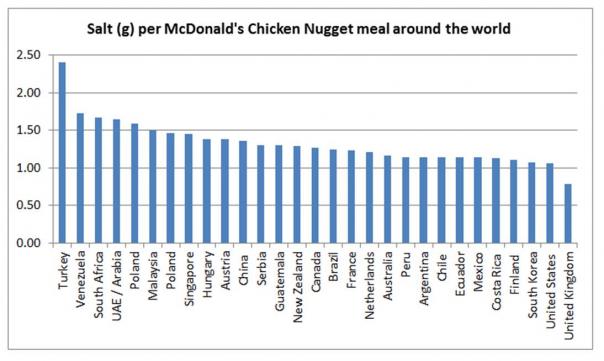
The WASH research, which compared fast food chains such as KFC, Subway and Burger King, found that 82% of meals contain more than 1g of salt. That’s more than a child aged 4-6 years old should be eating in one sitting, with some meals containing as much salt as 10 packets of ready salted crisps.
It found that over a year, a child in Costa Rica could be eating 18 teaspoons more salt than a child eating the same meal in the UK.
WASH notes that too much salt in childhood habituates children to the taste of salt, and put blood pressure up, which could lead to strokes and heart failure in later life.
It is calling for all food manufacturers to universally reduce the salt content of their products, to help us achieve the global maximum target of 5g salt per adult per day, with children’s meals taking priority.
The UK’s salt reduction programme has been named as an example to follow as it has set clear targets that the global foodservice industry ought to be achieving.
Salt intake has fallen in the UK by 15% (between 2001-2011), and thousands of strokes and heart attacks are being prevented every year, according to WASH.
It says that without targets the food industry cannot be held to account for their contribution to the escalating global problem of strokes, heart attacks and heart failure and must now reformulate their products as a matter of priority.
The survey compares fast food chains, globally, and finds that the UK comes out with the lowest salt levels against Finland, Turkey, Germany and the USA.
For example, the salt per McDonald’s chicken nugget meal finds the UK score 0.78g per serving compared to Turkey, which scored 2.40g per serving. The UK is the only country of the 30 researched that scores below 1g per serving.
Clare Farrand, Public Health Nutritionist and International Programme Lead at WASH, said: “The fact that these fast food chains are able to produce less salty children’s meals in some countries means they can do the same in all countries, and should immediately. All children, regardless of where they are from, should be able to enjoy the occasional meal out, as a treat, without putting their health at risk.”
Of the 387 children’s foods choices WASH surveyed only 233 had complete nutritional information to allow comparison of salt contents.